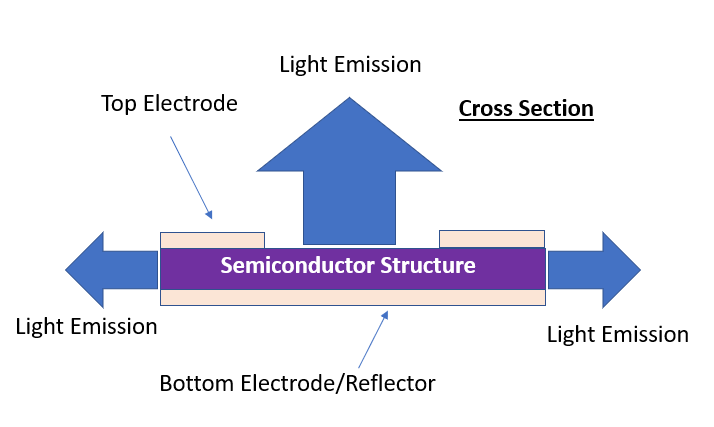What is a light-emitting diode?
A light-emitting diode is a semiconductor structure that can be made to emit light when a DC electrical current flows through it. As the current flows through the light-emitting diode (LED) junction, electrons in the semiconductor recombine with holes producing optical energy in the form of photons. The color of the light photons is determined by their energy which is determined by the band gap of the semiconductor material structure used in producing the LED.
Advantages of Light-emitting Diode:

Simplified Cross-section of a Light-emitting Diode
There has been little improvements in conventional lighting (i.e. incandescent, halogen, and fluorescent lamps) over the past several decades. On the other hand, the efficiency of light emitting diodes (LEDs) has improved to the point where they are now replacing incandescent and halogen lamps. This in not just true in white indoor/outdoor lighting but also in traditional monochrome lighting applications, such as traffic lights and automotive tail lights. LEDs have many advantages over conventional light sources that include long life, ruggedness, low power consumption, and small size. LEDs are monochromatic light sources and are currently available in various colors from UV-blue to green, yellow, and red.
How are LEDs used to Make White Light?
Due to the LED’s narrow-band emission characteristics, a white color light can only be produced in one of two ways:
- By arranging individual red, green, and blue (R,G,B) LEDs closely together and then diffusing and mixing the light emitted by them; or
- Combining a shortwave UV or blue LED with broadband fluorescent compounds or phosphors that convert part or all of the LED light into longer wavelengths
When creating a white LED using the first approach described above, several problems arise due to the fact that the R,G,B light emitting devices are made of different semiconductor materials. This require different operating voltages and, therefore, complex driving circuitry. Another disadvantage has to do with the low color-rendering characteristic of the resulting white light due to the monochromatic nature of the R,G,B LED emissions.
The second approach for producing white light from LEDs is more preferred since it only requires a single type of LEDs (either UV or blue) coated with fluorescent materials, thereby making it more compact and lower cost. Furthermore, the broadband light emission provided by most fluorescent materials or phosphors allows the possibility of high color-rendering white light.
